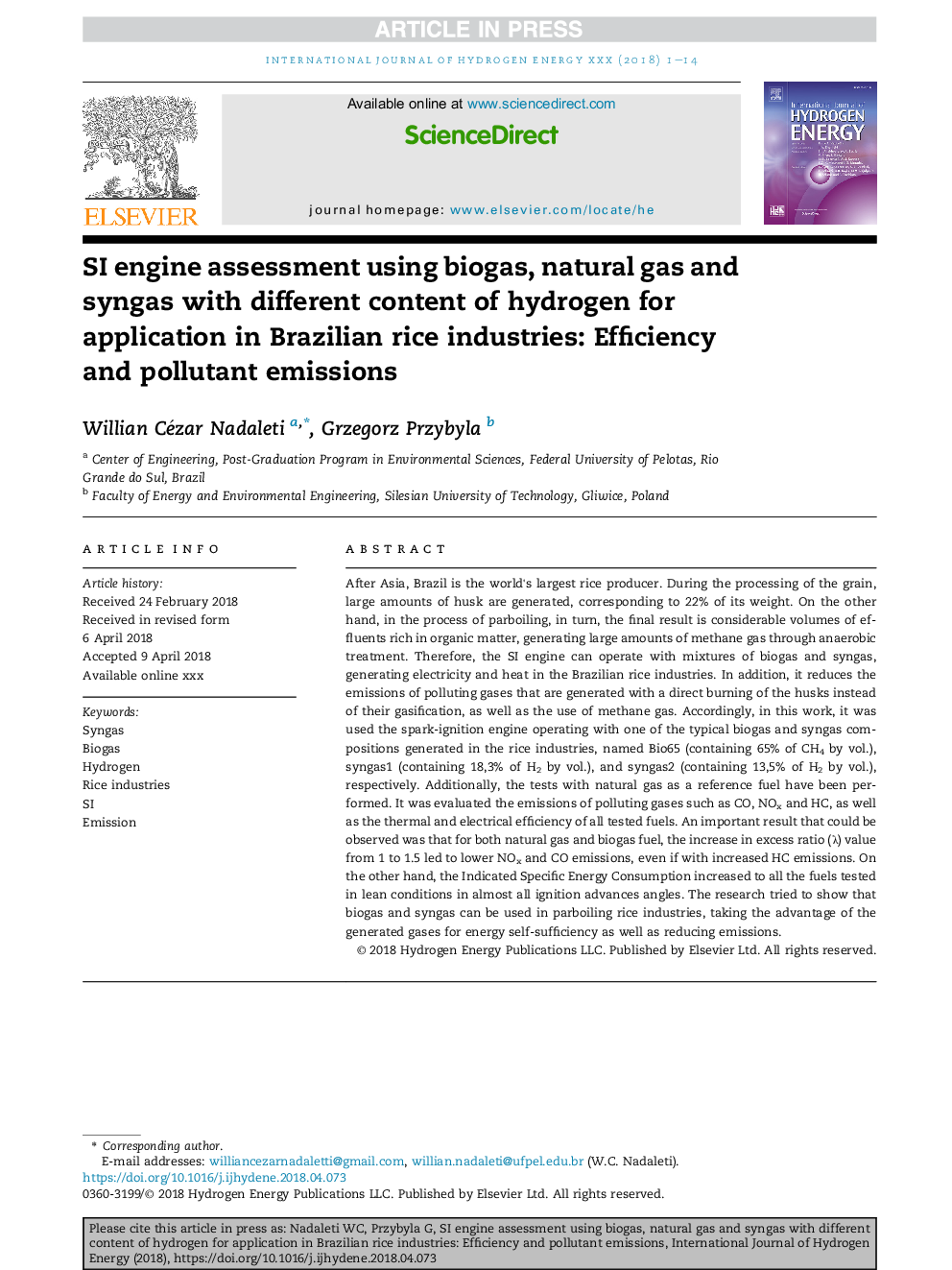| Article ID | Journal | Published Year | Pages | File Type |
|---|---|---|---|---|
| 7706031 | International Journal of Hydrogen Energy | 2018 | 14 Pages |
Abstract
After Asia, Brazil is the world's largest rice producer. During the processing of the grain, large amounts of husk are generated, corresponding to 22% of its weight. On the other hand, in the process of parboiling, in turn, the final result is considerable volumes of effluents rich in organic matter, generating large amounts of methane gas through anaerobic treatment. Therefore, the SI engine can operate with mixtures of biogas and syngas, generating electricity and heat in the Brazilian rice industries. In addition, it reduces the emissions of polluting gases that are generated with a direct burning of the husks instead of their gasification, as well as the use of methane gas. Accordingly, in this work, it was used the spark-ignition engine operating with one of the typical biogas and syngas compositions generated in the rice industries, named Bio65 (containing 65% of CH4 by vol.), syngas1 (containing 18,3% of H2 by vol.), and syngas2 (containing 13,5% of H2 by vol.), respectively. Additionally, the tests with natural gas as a reference fuel have been performed. It was evaluated the emissions of polluting gases such as CO, NOx and HC, as well as the thermal and electrical efficiency of all tested fuels. An important result that could be observed was that for both natural gas and biogas fuel, the increase in excess ratio (λ) value from 1 to 1.5 led to lower NOx and CO emissions, even if with increased HC emissions. On the other hand, the Indicated Specific Energy Consumption increased to all the fuels tested in lean conditions in almost all ignition advances angles. The research tried to show that biogas and syngas can be used in parboiling rice industries, taking the advantage of the generated gases for energy self-sufficiency as well as reducing emissions.
Related Topics
Physical Sciences and Engineering
Chemistry
Electrochemistry
Authors
Willian Cézar Nadaleti, Grzegorz Przybyla,
